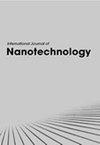气相色谱-质谱法测定油煎鹌鹑肉和兔肉中多环芳烃的含量
IF 0.3
4区 材料科学
Q4 MATERIALS SCIENCE, MULTIDISCIPLINARY
引用次数: 0
摘要
加工改善了食品的微生物特征,但也引入了致癌化合物,如食品中的多环芳烃。人们已经注意到,这些致癌化合物的产生可以通过腌制过程来减少。当涉及到各种变量时,很难检查多环芳烃的水平并对结果进行比较。该研究旨在分析黑鹌鹑和棕色鹌鹑肉中多环芳烃的浓度标准,检查不同配方(使用不同香料)的影响,并比较不同配方的多环芳烃浓度。本研究还重点比较了鹌鹑(棕色和黑色)的多环芳烃值以及它们与先前兔子研究的多环芳烃结果。采用气相色谱-质谱法对42份黑、褐鹌鹑肉样品进行了多环芳烃分析。其中,棕鹌鹑的配方V(乡村烤串)、配方IV(印度烤串)和配方III(克粉烤串)的萘含量最高,分别为1.71 μg/g和1.38 μg/g。黑鹌鹑生样中萘的平均浓度为0.81 μg/g,褐鹌鹑生样中萘的平均浓度为0.85 μg/g。原始样品中多环芳烃的含量取决于环境污染程度。配方二(鸡尾酒串)中两种鹌鹑的萘浓度最低。菲、氟蒽和芘的浓度低于萘。样品中未检测到蒽的含量。鹌鹑和兔肉样品中未检出多环芳烃。这是对鹌鹑肉中多环芳烃含量的首次检测。该研究可为食品行业提供初步指导,说明黑鹌鹑的多环芳烃含量低于棕色鹌鹑,是消费者的最佳肉类。本文章由计算机程序翻译,如有差异,请以英文原文为准。
Gas chromatography-mass spectrometry determination of polycyclic aromatic hydrocarbons in oil fried quail meat vs. rabbit meat
Processing improves microbiological profile of food, but also introduces carcinogenic compounds, such as PAHs in food items. It has been noticed that generation of these carcinogenic compounds can be reduced by the marination process. There is a difficulty to check PAHs levels and make comparison of results when a variety of variables are involved. The study aimed to analyse the concentration of PAHs standards in black and brown quail meat, checked the effect of different recipes (in which different spices are used), and also compared the recipe-wise PAHs concentration. This study also focused to compare the PAHs values in both quails (brown and black) as well as their PAHs results with the previous rabbit study. PAHs were analysed by gas chromatography mass spectrometry from 42 samples of black and brown quail meat samples. The maximum level of naphthalene was noticed in recipe V (country fried kebab) (1.71 μg/g), recipe IV (chapli kebab) (1.38 μg/g) and recipe III (gram flour kebab) (1.01 μg/g) of brown quail. The mean naphthalene concentration in raw sample was 0.81 μg/g for black quail and 0.85 μg/g for brown quail. Levels of PAHs in raw samples were dependent on contamination of environment. The lowest concentration of naphthalene was noticed in recipe II (cocktail kebab) in both quail. Concentrations of phenanthrene, fluoranthene and pyrene were lower than naphthalene. Content of anthracene was not observed in any sample. Heavy PAHs were not detected in any samples of quail and rabbit meat. This is first effort to check the PAHs concentration in quail meat. This study can provide a preliminary guideline to food industry that black quail is the best meat for consumers due to its lower PAHs range rather than brown quail.
求助全文
通过发布文献求助,成功后即可免费获取论文全文。
去求助
来源期刊

International Journal of Nanotechnology
工程技术-材料科学:综合
CiteScore
0.60
自引率
20.00%
发文量
45
审稿时长
6-12 weeks
期刊介绍:
IJNT offers a multidisciplinary source of information in all subjects and topics related to Nanotechnology, with fundamental, technological, as well as societal and educational perspectives. Special issues are regularly devoted to research and development of nanotechnology in individual countries and on specific topics.
 求助内容:
求助内容: 应助结果提醒方式:
应助结果提醒方式:


